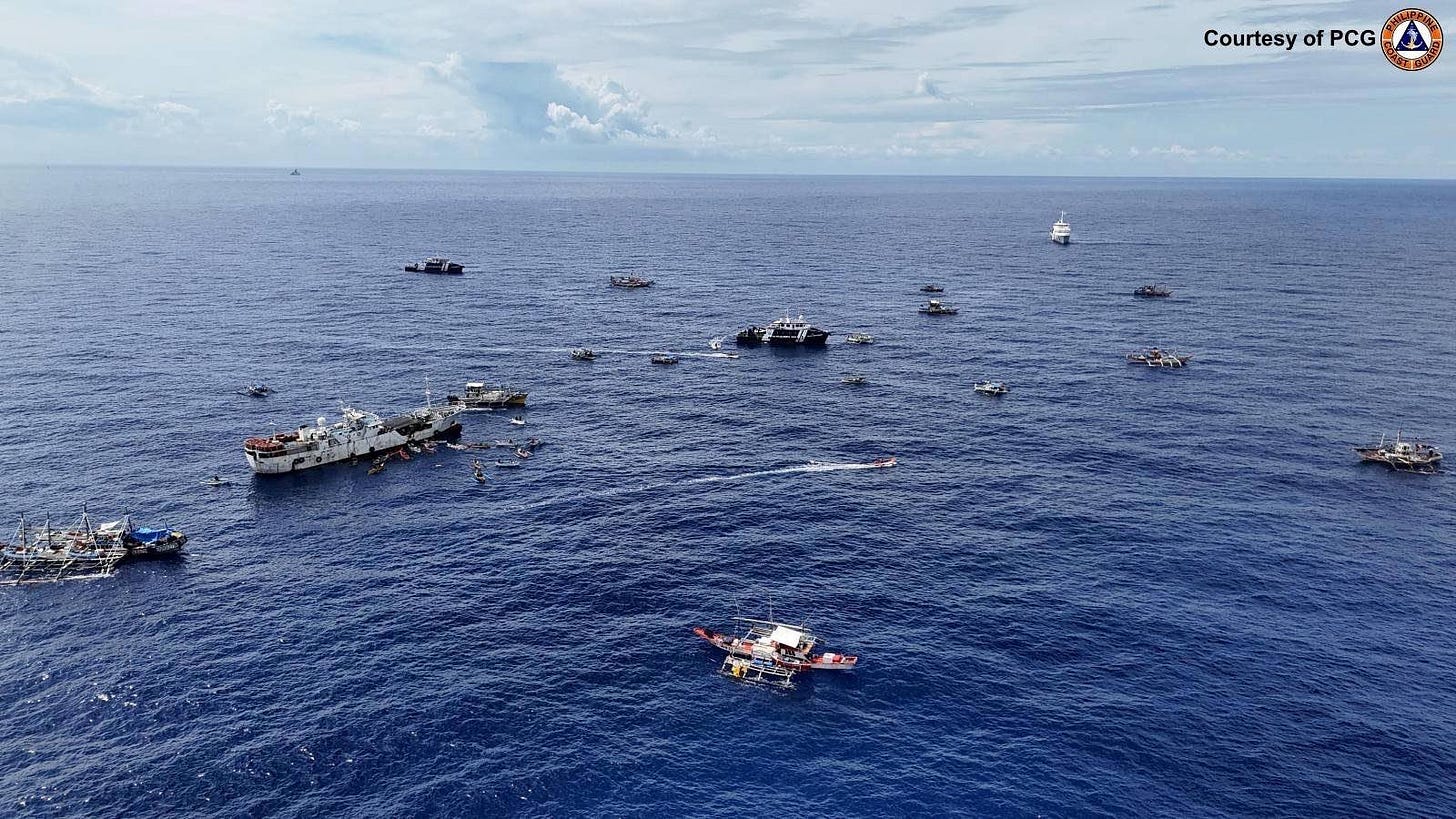This piece is freely available to read. Become a paid subscriber today and help keep Mencari News financially afloat so that we can continue to pay our writers for their insight and expertise.
China has announced a unilateral plan to put up a nature reserve on a disputed shoal in the West Philippine Sea, a move that could further heighten tension in one of the region’s flashpoints.
The Chinese plan could cement its foothold on the strategic Bajo de Masinloc, only 120 to 150 nautical miles west of the Zambales coastline, where a former US Navy base used to sit for decades after the end of the Second World War.
Although the naval base was already converted into a civilian industrial and commercial complex after Washington pulled out in 1992, naval vessels from the United States, Japan, and other Western allies continued to make port calls to Subic Bay because of its deep natural harbor.
Subic Bay is still the most suitable berthing for conventional and nuclear-powered submarines as well as large surface combatant ships, including aircraft carriers and guided missile destroyers.
Truth matters. Quality journalism costs.
Your subscription to Mencari (Australia) directly funds the investigative reporting our democracy needs. For less than a coffee per week, you enable our journalists to uncover stories that powerful interests would rather keep hidden. There is no corporate influence involved. No compromises. Just honest journalism when we need it most.
How dangerous is China’s plan to put up a nature reserve on Bajo de Masinloc?
On the surface, it was a benign environmental project aimed at conserving corals and the rich marine resources of Bajo de Masinloc. However, it could just be a cover for China to occupy the uninhabited shoal, which is within the Philippines’ 200 nautical mile exclusive economic zone (EEZ). China could eventually reclaim the rocky outcrop and convert it into a military facility, similar to seven other features it had occupied in the larger South China Sea.
The Philippines should not trust China’s words because Beijing has mastered the art of deception. In 1995, when it seized control and eventually occupied the half-submerged Panganiban Reef or Mischief Reef, China claimed it was only building a temporary shelter for its fishermen, starting with makeshift bamboo huts.
Two decades later, China had converted the reef into an artificial island, complete with a 3-kilometer runway and secured ports. China has seven man-made islands, a violation of the 2002 Declaration of Conduct of Parties in the South China Sea (DOC), an informal code of conduct that prohibits new occupation and building of new structures in the contested area.
A Chinese fighter from Mischief Reef could reach Manila in less than an hour, posing an imminent threat to the Philippines’ national security. China is also an expert in double-talk. It usually says one thing but does another. It does not honor its word.
For instance, how could China protect the marine resources on Bajo de Masinloc when Chinese fishermen continue to harvest giant clams, destroying the shoal’s ecosystem?
Since 2012, after seizing control of the shoal, Beijing has banned all fishermen, including Filipinos, from entering Bajo de Masinloc’s lagoon, except those coming from China.
China is only using the nature reserve as a cover, but it could end up as a strategic military base and an effective choke point in the West Philippine Sea. Tankers, bulk carriers, general cargo and other commercial vessels face potential freedom of navigation issues when passing near Bajo de Masinloc enroute to Taiwan and Japan, or to the Pacific Ocean through the Bashi or Balentang channels.
It could pose problems for US and Western warships traversing the West Philippine Sea. It is indeed a red line, not only for the Philippines but for the US, Australia, Canada, and Japan.
What can the Philippines do?
Filing a diplomatic protest over China’s plan to build a nature reserve on Bajo de Masinloc is not enough, although it is a step in the right direction. Manila must always register its protest against Beijing, rejecting the nature reserve plan, rather than staying silent and appearing to acquiesce to the plan.
Political and diplomatic options are necessary, but Manila should take it to the next level by filing another legal case against Beijing for seizing control of Bajo de Masinloc.
The Philippines has historical maps that date back to the Spanish period in the 18th century, showing that Bajo de Masinloc is part of the Philippines. Under the 1982 United Nations Convention on the Law of the Sea (UNCLOS), Manila has jurisdiction over Bajo de Masinloc because it is part of its EEZ.
Before 1992, the US Navy used Bajo de Masinloc as an impact area for its naval guns during live fire exercises and training drills. China is beyond its EEZ and the 2016 arbitral ruling in The Hague had repudiated China’s nine-dash-line claim over the South China Sea.
With all the evidence, the Philippines can take China to any international tribunal to oppose China’s illegal, excessive, aggressive, and deceptive claim on Bajo de Masinloc.
The Philippines’ Armed Forces and Coast Guard must not stop patrolling Bajo de Masinloc, showing the flag in the area, and assisting Filipino fishermen around the shoal.
It must also hold regular maritime drills with like-minded countries, like Australia, Canada, India, Japan, New Zealand, and the United States, reminding China it has no sovereignty in the area. The Philippines must always fight for what is right. It must not stop defending its rights under international laws.
The opinions expressed are those of the author and do not necessarily represent the views of this publication.
Got a News Tip?
Contact our editor via Proton Mail encrypted, X Direct Message, LinkedIn, or email. You can securely message him on Signal by using his username, Miko Santos.
Sustaining Mencari Requires Your Support
Independent journalism costs money. Help us continue delivering in-depth investigations and unfiltered commentary on the world's real stories. Your financial contribution enables thorough investigative work and thoughtful analysis, all supported by a dedicated community committed to accuracy and transparency.
Subscribe today to unlock our full archive of investigative reporting and fearless analysis. Subscribing to independent media outlets represents more than just information consumption—it embodies a commitment to factual reporting.
Not ready to be paid subscribe, but appreciate the newsletter ? Grab us a beer or snag the exclusive ad spot at the top of next week's newsletter.







